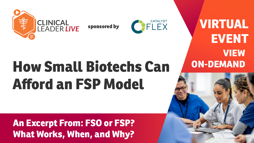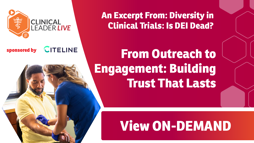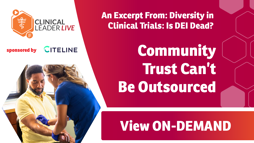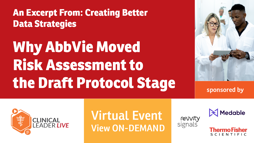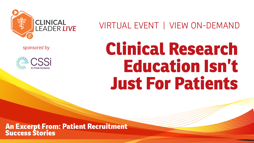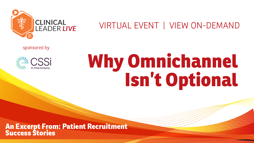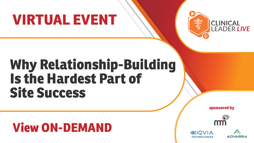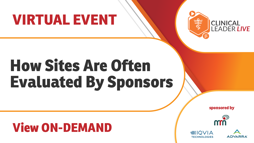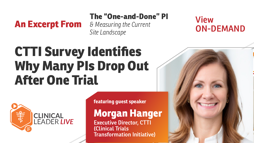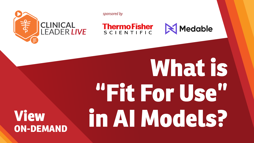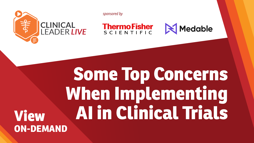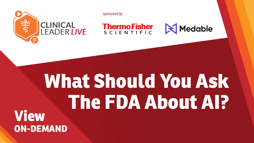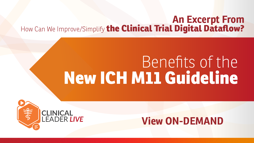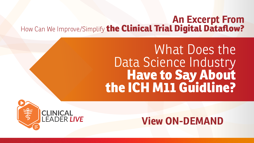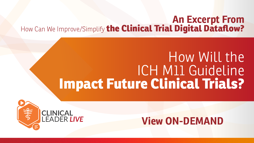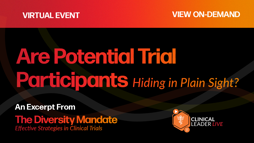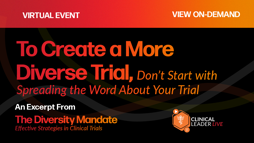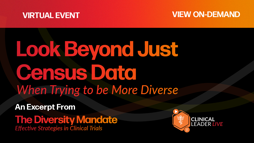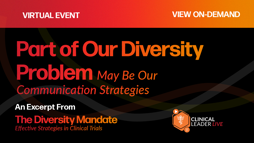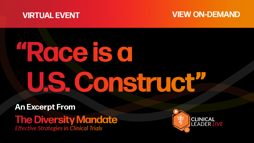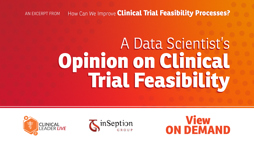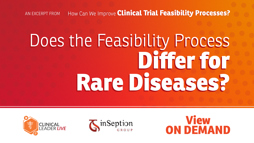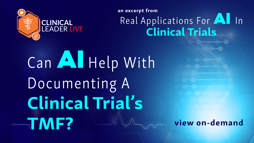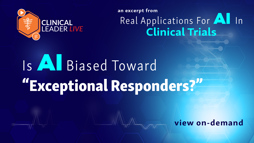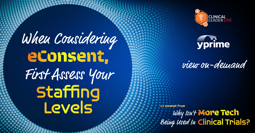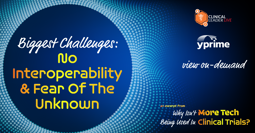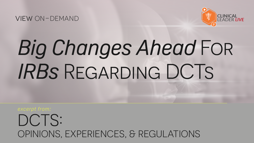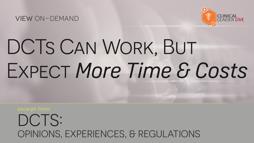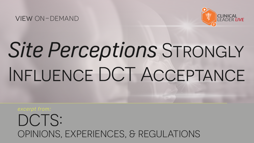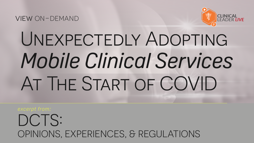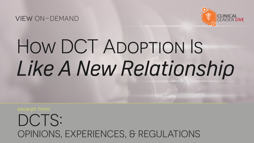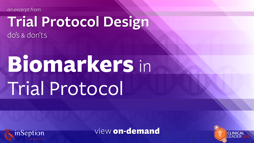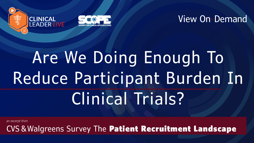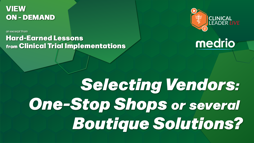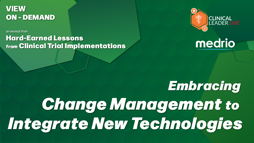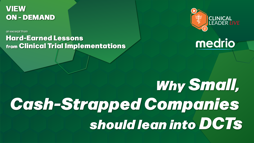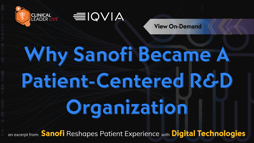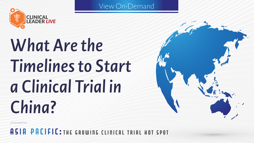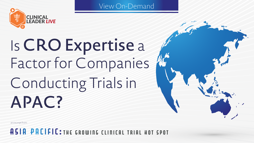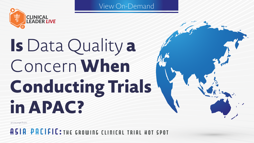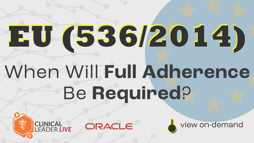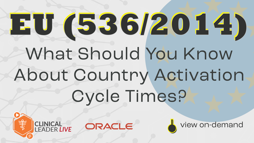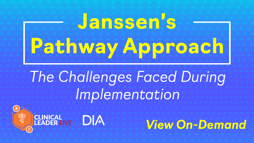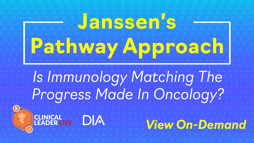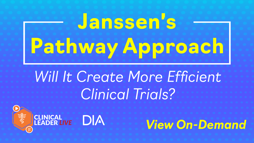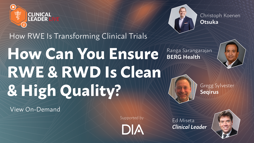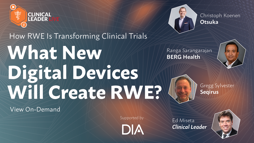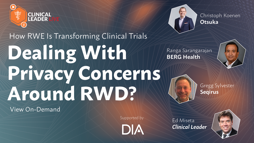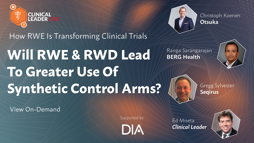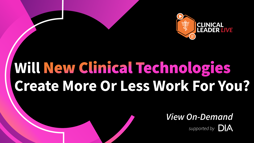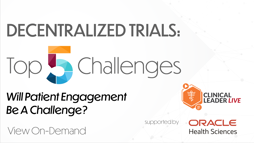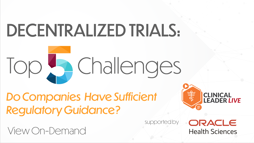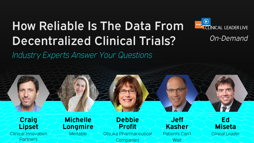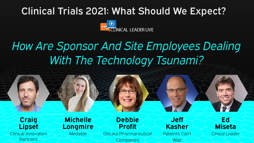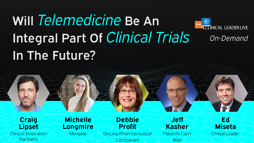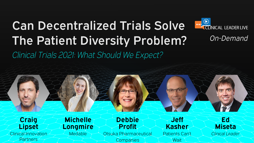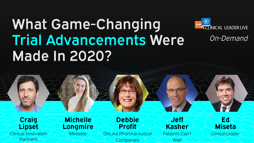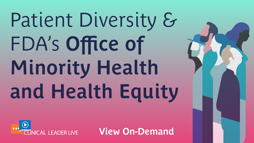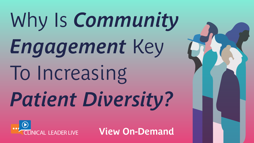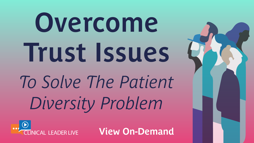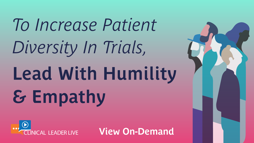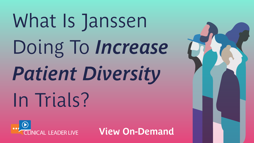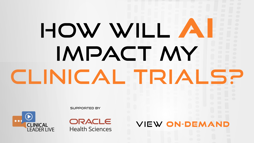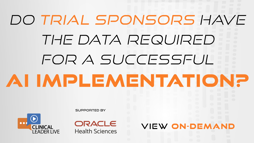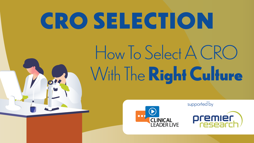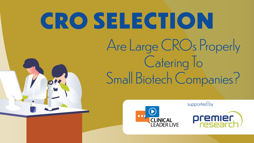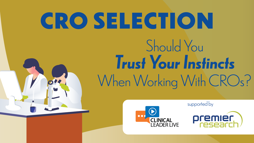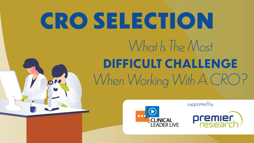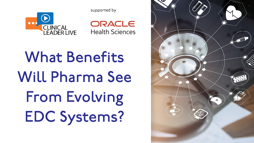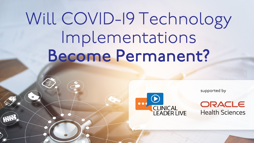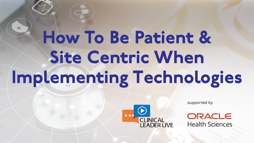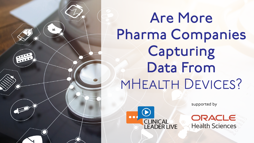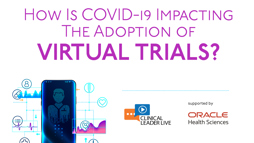
Welcome to Clinical Leader Live – An interactive forum to discuss some of the most important technologies and trends impacting clinical trials.
Throughout the year, our editors sit down with industry experts to discuss how sponsor companies can tackle some of today's biggest challenges they may face in managing a clinical trial. Even better, the audience gets to ask questions during the presentation. Each Clinical Leader Live session is archived and can be accessed at any time by registered site users.
FSO OR FSP? WHAT WORKS, WHEN, AND WHY?
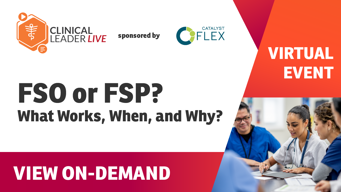
FSO or FSP? What Works, When, And Why?
Three industry experts break down the pros and cons of full-service outsourcing (FSO) and functional service provider (FSP) models, sharing real-world insights on when each works best — and why. Join this conversation and gain practical guidance to choose the right ...
DIVERSITY IN CLINICAL TRIALS: IS DEI DEAD?

Diversity In Clinical Trials: Is DEI Dead?
Despite political headwinds and policy rollbacks, the need for diversity in clinical trials is as urgent as ever. This expert panel discussed the current landscape, the real impact of recent setbacks, and why equitable patient recruitment must remain a priority.
CREATING BETTER DATA STRATEGIES

Better Data Strategies: Best Practices For Integrating And Analyzing
In this panel discussion, we explored best practices for integrating and analyzing data to support informed decisions, including how ICH E6 R3 defines risk-proportionate approaches in clinical trials, what that means in practice, and how sponsors and sites can adapt. You ...
PATIENT RECRUITMENT SUCCESS STORIES
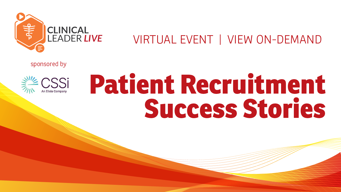
Patient Recruitment Success Stories
In this presentation, speakers shared how sites and sponsors are overcoming patient recruitment barriers with innovative strategies that emphasize community engagement and intelligent use of technology.
STRENGTHENING CLINICAL SITE PARTNERSHIPS FOR TRIAL SUCCESS
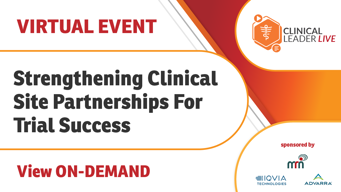
Strengthening Clinical Site Partnerships For Trial Success
With the rise of site networks, the power dynamic in clinical research has shifted, making strong site-sponsor relationships more critical than ever for trial success.
MEET OUR HOST

Dan Schell is Chief Editor of Clinical Leader where he writes about topics related to clinical trial operations. Previously, he served as the Editorial Director of Life Science Leader magazine where he worked with writers and editors on choosing the best topics for articles as well as refining all content to meet the publication's high editorial standards.
THE “ONE-AND-DONE” PI & MEASURING THE CURRENT SITE LANDSCAPE
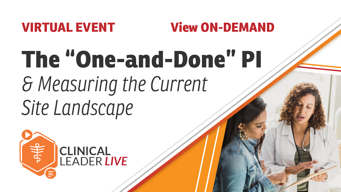
The "One-and-Done" PI & Measuring the Current Site Landscape
The impact of the "one-and-done PI" has long been discussed in clinical trials. But what does the research show, and should we even be concerned about this phenomenon?
AI IN ACTION: TRANSFORMING CLINICAL TRIALS
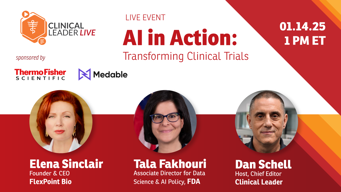
AI In Action: Transforming Clinical Trials
Tala Fakhouri, associate director for data science and ai policy at the FDA, along with industry consultant Elena “Ella” Sinclair of FlexPoint Bio, talk about common applications of AI in clinical development and the new AI-focused regulatory Guidance from the...
HOW CAN WE IMPROVE/SIMPLIFY THE CLINICAL TRIAL DIGITAL DATAFLOW?
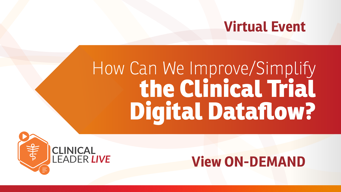
How Can We Improve/Simplify the Clinical Trial Digital Dataflow?
With ICH M11 expected to be adopted by the end of 2024, this Clinical Leader Live discusses the advantages of improving and simplifying the dataflow of clinical trials but also the challenges associated with creating a connected digital dataflow, including digital health ...
THE DIVERSITY MANDATE: EFFECTIVE STRATEGIES IN CLINICAL TRIALS
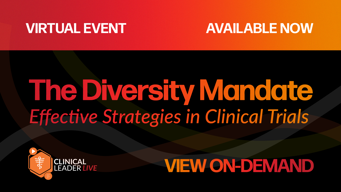
The Diversity Mandate: Effective Strategies in Clinical Trials
The June 2024 release of the FDA’s guidance related to diversity in clinical trials gives more direction to the industry on this ongoing concern and details what trials need Diversity Action Plans (DAPs), what should be included, and how to submit them. Will this be...
HOW CAN WE IMPROVE CLINICAL TRIAL FEASIBILITY PROCESSES?
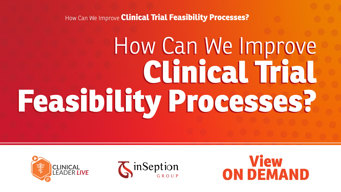
How Can We Improve Clinical Trial Feasibility Processes?
Inefficient. Time-consuming. Frustrating. Often, these are the words used to describe the feasibility and site selection process for clinical trials. In this Clinical Leader Live, experts from J&J Innovative Medicines, Takeda, and CSL Behring discuss how...
LAST YEAR’S DCT IS TODAY’S CLINICAL TRIAL
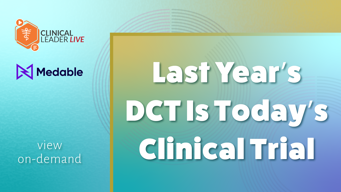
Last Year's DCT Is Today's Clinical Trial
Experts explore the clinical trial landscape, including the positive impact of DCTs and their transition from innovation to indispensable practice in the era of evidence generation and modern trials.
REAL APPLICATIONS FOR AI IN CLINICAL TRIALS

Real Applications For AI In Clinical Trials
You’re fooling yourself if you think AI isn’t going to impact the clinical trial space. It already is, and our guests on this Clinical Leader Live talk about their firsthand experiences — and possible future applications — with AI in everything fro...
WHY ISN'T MORE TECH BEING USED IN CLINICAL TRIALS?
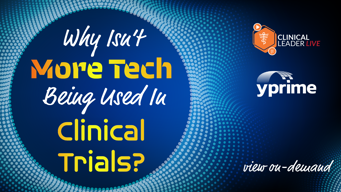
Why Isn't More Tech Being Used In Clinical Trials?
Check out this discussion from Clinical Leader Live on why many sites are still relying on paper-based systems and what "e" technologies are helping and increasing in adoption.
DCTS: OPINIONS, EXPERIENCES, AND REGULATIONS
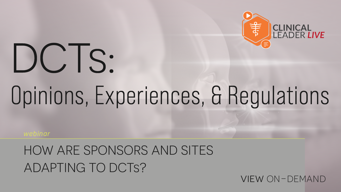
DCTs: Opinions, Experiences, And Regulations
We are three years away from when the hype machine surrounding decentralized trials (DCTs) first got revved up, but is interest really slowing? Sure the pros and cons have been debated ad infinitum, but like any polarizing topic, the real result or ultimate change probabl...
TRIAL PROTOCOL DESIGN DO’S AND DON’TS
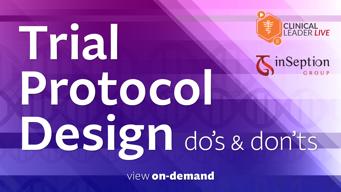
Trial Protocol Design Do's And Don'ts
Designing a clinical trial protocol that exhibits the value of a new drug is central to bringing innovative treatments to market. Listen in as experts share tips for ensuring no missteps go unnoticed.
CVS AND WALGREENS SURVEY THE PATIENT RECRUITMENT LANDSCAPE

CVS And Walgreens Survey The Patient Recruitment Landscape
Patient recruitment has always been one of the most difficult aspects of clinical trials. Drug developers must recruit the required number of patients to get the study off the ground, retain those patients to keep the trial on track, and must now place a greater focus on ...
HARD-EARNED LESSONS FROM CLINICAL TRIAL IMPLEMENTATIONS

Hard-Earned Lessons From Clinical Trial Implementations
Clinical trials continue to become more dependent on new technology solutions. AI, machine learning, decentralized trials, remote monitoring, eTechnologies, and other new solutions are changing the face of clinical trials and having a profound impact on how studies are co...
SANOFI RESHAPES PATIENT EXPERIENCE WITH DIGITAL TECHNOLOGIES

Sanofi Reshapes Patient Experience With Digital Technologies
Sanofi has adopted a Patient Informed Research And Development model within the organization. The goal of the model is to work with patients, patient groups, and patient communities to understand the concerns of patients and ensure those voices are heard throughout the co...
DCTS AND SITES: WHAT SPONSORS NEED TO KNOW

DCTs And Sites: What Sponsors Need To Know
When the COVID-19 pandemic hit the U.S. in March 2020, many drug developers were caught by surprise. With clinics overwhelmed by COVID patients and the reluctance of some patients to venture out to those clinics, many trials faced the prospect of being delayed or cancelle...
ASIA PACIFIC: THE GROWING CLINICAL TRIAL HOT SPOT

Asia Pacific: The Growing Clinical Trial Hot Spot
The Asian-Pacific (APAC) region is one of the fastest growing areas for clinical trials. There are many benefits to conducting trials in the region, including low cost, ease of regulatory compliance, a growing patient population, and the presence of top clinical instituti...
WHAT RISKS DOES EU (536/2014) POSE TO YOUR TRIALS?
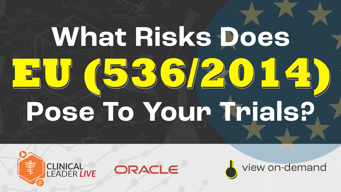
What Risks Does EU (536/2014) Pose To Your Trials?
In January 2022, major changes came to the way clinical trials are conducted in the European Union. EU (536/2014) came into effect and is a binding regulation across all members of the EU. The new regulation will streamline procedures and remove duplication single submiss...
IS JANSSEN'S PATHWAY APPROACH THE FUTURE OF DRUG DEVELOPMENT?

Is Janssen's Pathway Approach The Future Of Drug Development?
Drug development continues to evolve. In the last 20 years, the industry has progressed from evidence-based drug development to more targeted precision medicines. But is the industry now ready to move into a new phase of drug development?
Our October Clinical Le...
HOW RWE IS TRANSFORMING CLINICAL TRIALS
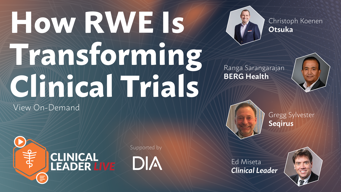
How RWE Is Transforming Clinical Trials
According to the FDA, real-world data (RWD) and real-world evidence (RWE) are playing an increasing role in health care decisions. Computers, wearables, mobile devices, and biosensors are all enabling researchers to gather and store large amounts of health-related data. F...
PHARMA, SITES, AND CROS: 3 TAKES ON HOT-BUTTON ISSUES
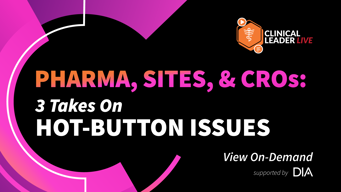
Pharma, Sites, And CROs: 3 Takes On Hot-Button Issues
Sponsors, sites, and CROs are generally required to conduct a successful clinical trial. But those three entities do not always see eye-to-eye when issues arise. Whether it’s site payments, patient recruitment, or clinical technology adoption, disagreements can and ...
SOLVING THE TOP 5 CHALLENGES OF DECENTRALIZED TRIALS

Solving The Top 5 Challenges of Decentralized Trials
I had the opportunity to sit down with Tero Laulajainen, VP and head of global clinical science and operations for UCB, and Hassan Kadhim, global head of clinical trial business capabilities, clinical innovation, and industry collaborations at Bristol-Myers Squibb to disc...
CLINICAL TRIALS 2021 – WHAT CAN WE EXPECT
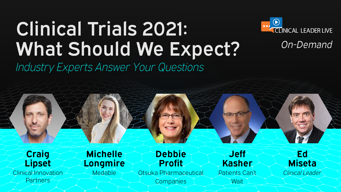
Clinical Trials 2021 – What Can We Expect
In December 2020, I had the opportunity to sit down with Craig Lipset of Clinical Innovation Partners, Debbie Profit of Otsuka, Michelle Longmire of Medable, and Jeff Kasher of Patients Can’t Wait to discuss the advances we have made in trials and what we can expect...
SOLVING THE PATIENT DIVERSITY PROBLEM
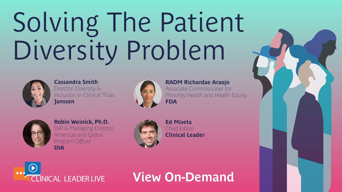
Solving The Patient Diversity Problem
Patient diversity remains a hot topic in clinical trials. Regulators are focused on increasing diversity in patient populations while sponsor companies, CROs, and sites continue to struggle to find the right balance of gender and ethnic participation. What everyone would ...
IS AI IMPROVING OUTCOMES IN CLINICAL TRIALS?
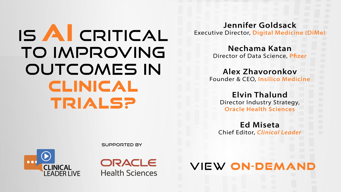
Is AI Improving Outcomes In Clinical Trials?
The complexity of initiating clinical studies continues to grow. The complexity is a confluence of complicated protocols, globalization, and regulatory changes, all at a time when there is intense pressure to restrain costs and shorten timelines. The key to reducing these...
CRO SELECTION: INSIDER TIPS ON SELECTING THE BEST OUTSOURCING PARTNER
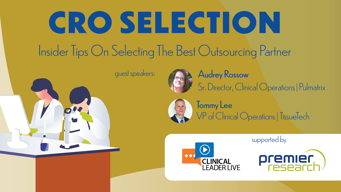
CRO Selection: Insider Tips On Selecting The Best Outsourcing Partner
Of all the tasks that are handled by executives in clinical operations, few bring as much anxiety and stress as the selection of a CRO partner. Make the right choice and your trial will be a breeze. Make the wrong choice and your trial can go off the rails and require the...
EDC TRANSFORMATION: MEET TODAY'S CLINICAL TRIAL NEEDS
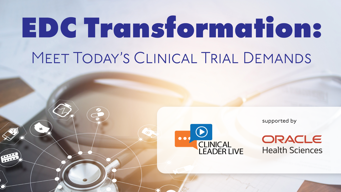
EDC Transformation: Meet Today's Clinical Trial Needs
When EDC in clinical trials began almost 30 years ago, it was revolutionary to clinical research. Since then, advances in science and technology are forcing the industry to consider new methods for collecting and using clinical trial data. The initial electronic data capt...
IS PHARMA READY TO EMBRACE VIRTUAL TRIALS?
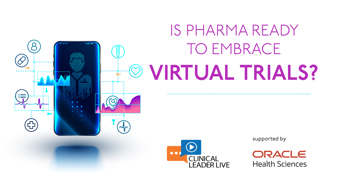
Is Pharma Ready To Embrace Virtual Trials?
For years, technology vendors have pitched the benefits of virtual (decentralized) trials. Virtual trials are patient-centric and site-centric and can produce cost and efficiency benefits for sponsor companies. While adoption has been slow, the COVID-19 pandemic suddenly ...
COMMUNICATION BREAKDOWN – CROS, SITES & IMPROVING TRIAL QUALITY
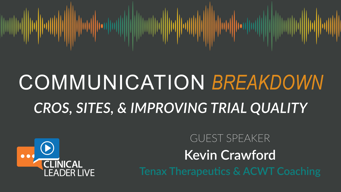
Clinical Leader Live: Communication Breakdown – CROs, Sites & Improving Trial Quality
Poor communication between sponsors, sites, and CROs can doom a clinical trial. Fear, clinical systems, and hierarchies can create issues that keep individuals from developing a clean and clear line of communication. When communication fails, the result is protocol deviat...
WHAT IS WORKING, WHAT MORE NEEDS TO BE DONE?

What Is Working, What More Needs To Be Done?
In February 2020 Clinical Leader Live presented a virtual conference on the topic of patient centricity. The goal of the third session was to hear the insights of patient groups, consultants, and sites on what is working, what isn’t, and what more needs to be done. ...
THE PATIENT PERSPECTIVE ON CLINICAL TRIALS
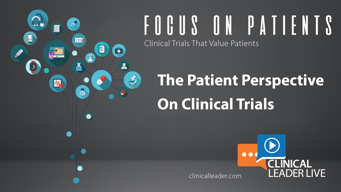
The Patient Perspective On Clinical Trials
No one is in a better position to discuss what is and isn't working for patients than those who have experienced clinical trials first-hand. In February 2020, Clinical Leader Live presented an interactive virtual conference examining what sponsor companies are doing t...
INCORPORATING THE PATIENT VOICE INTO CLINICAL TRIALS

Incorporating The Patient Voice Into Clinical Trials
Every company wants to design trials that are more patient-centric and incorporate the patient voice into their trials. But how many are actually making progress? And are sponsor companies meeting the needs of their trial participants? In February 2020, Clinical Leader Li...




